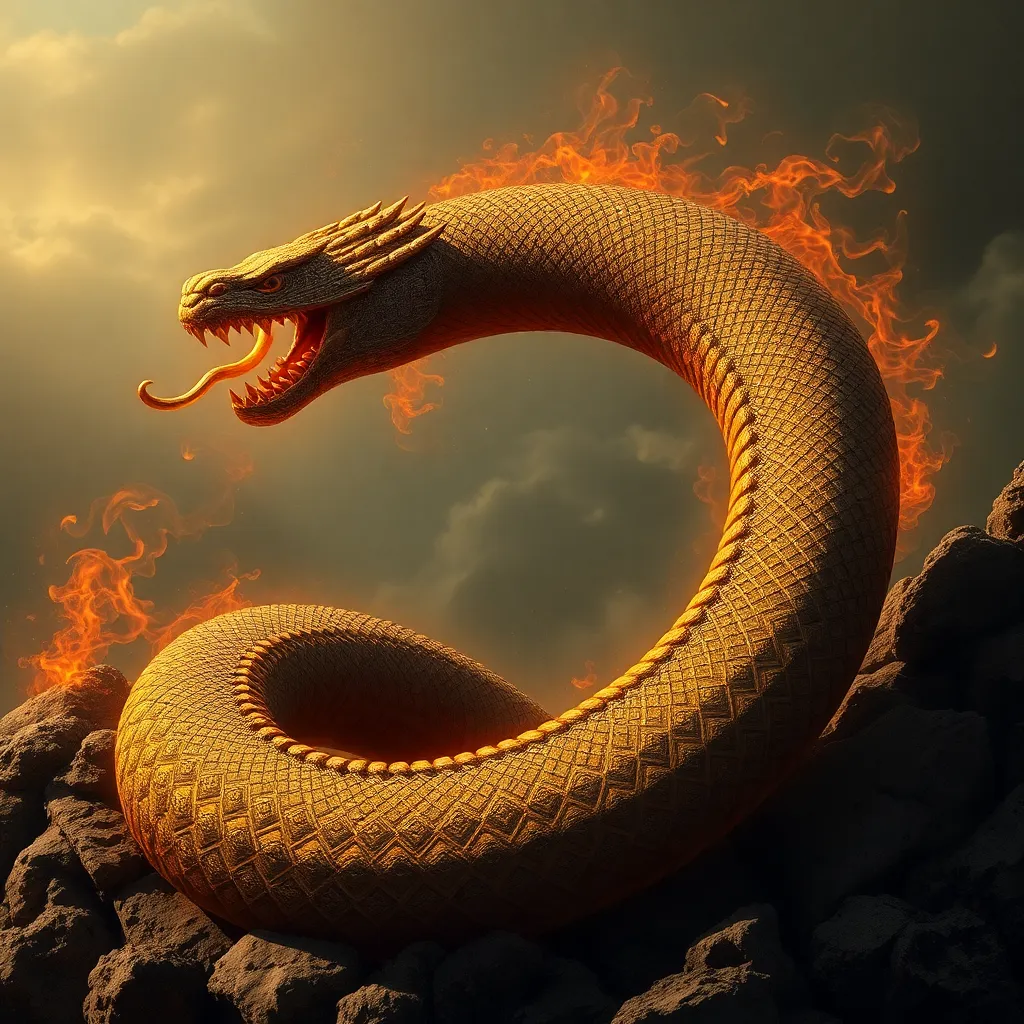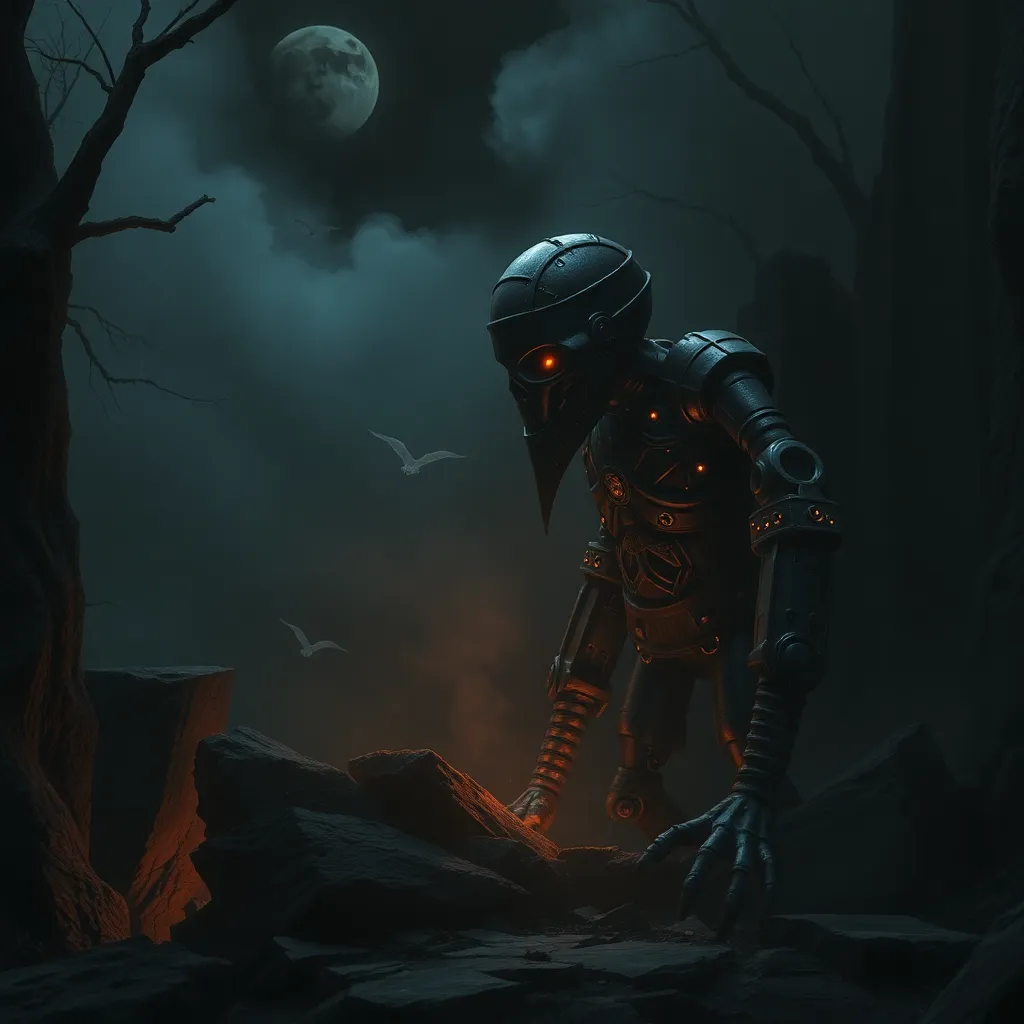Cipactli in Zapotec Cosmology: Exploring the Serpent’s Role in the Creation of the World
I. Introduction to Zapotec Cosmology
The Zapotec civilization, one of the most influential indigenous cultures of Mesoamerica, thrived in the region now known as Oaxaca, Mexico. This ancient society is recognized for its remarkable achievements in architecture, agriculture, and writing, as well as its rich tapestry of myths and beliefs. The cosmology of the Zapotecs plays a crucial role in understanding their worldview, illuminating how they perceived the universe and their place within it.
Cosmology, in Zapotec culture, encompasses creation myths, deities, and the interconnectedness of life and nature. These beliefs provide a framework for understanding existence, death, and the cyclical nature of life. This article aims to explore the pivotal role of Cipactli, a serpent figure in Zapotec creation myths, and its significance in the broader context of Zapotec cosmology.
II. The Mythical Figure of Cipactli
A. Description of Cipactli in Zapotec Mythology
Cipactli is often depicted as a serpent or a crocodile-like creature, embodying the essence of primordial chaos and potential. In Zapotec mythology, Cipactli is not merely an animal but a powerful entity that represents the earth and its creation. With its vast body, Cipactli symbolizes the raw material from which the world is formed.
B. Cipactli as a Primordial Entity and Its Symbolic Meanings
Cipactli’s significance extends beyond its physical description; it embodies several symbolic meanings:
- Creation: As a primordial being, Cipactli is central to the creation of the world.
- Chaos: It represents the chaotic forces of nature that precede order.
- Life and Death: Cipactli’s cyclical nature reflects the interdependence of life and death.
C. Comparisons with Other Mesoamerican Creation Myths
Cipactli shares similarities with other Mesoamerican deities, such as Quetzalcoatl and Tezcatlipoca, who also play vital roles in creation myths. However, while Quetzalcoatl is often associated with the wind and knowledge, and Tezcatlipoca with the night and conflict, Cipactli stands out as a representation of the earth’s primordial state.
III. Creation Myths Involving Cipactli
A. Detailed Narrative of the Creation Myth Featuring Cipactli
In the creation myth involving Cipactli, the serpent is depicted as the foundation upon which the world is built. It is said that the gods, seeking to create the world, engaged in a struggle with Cipactli. They ultimately defeated the serpent and used its body to form the earth, mountains, rivers, and all living beings.
B. Role of Cipactli in Shaping the World and Its Inhabitants
Cipactli’s sacrifice is integral to the creation story, as its body becomes the landscape that sustains life. The serpent’s blood is believed to give rise to vegetation, while its bones create the mountains. This act of creation emphasizes the idea that life arises from death, a theme prevalent in many indigenous cosmologies.
C. Analysis of Variations in the Myth Across Different Zapotec Communities
While the core narrative of Cipactli remains consistent, variations exist among different Zapotec communities. These differences reflect local customs, environmental contexts, and the unique cultural heritage of each community. Some narratives may emphasize certain aspects of Cipactli’s nature, showcasing the rich diversity within Zapotec cosmology.
IV. The Symbolism of the Serpent
A. Serpent as a Universal Symbol in Various Cultures
The serpent is a powerful symbol across various cultures, often representing duality—life and death, wisdom and ignorance, creation and destruction. In many indigenous cultures, serpents are seen as guardians of knowledge and transformation.
B. Specific Attributes of Cipactli That Resonate with Serpentine Symbolism
Cipactli embodies several attributes that resonate with the broader symbolism of serpents:
- Transformation: The ability to shed skin represents renewal and transformation.
- Wisdom: The serpent is often associated with ancient knowledge and the mysteries of life.
- Fertility: Cipactli’s connection to creation reinforces its role in fertility and abundance.
C. The Significance of the Serpent in the Context of Life, Death, and Regeneration
The serpent, especially in the context of Cipactli, underscores the cyclical nature of existence. Life emerges from death, and the serpent’s form embodies this eternal cycle, highlighting the interconnectedness of all beings within the cosmos.
V. Cipactli’s Influence on Zapotec Culture
A. Reflection of Cipactli in Art, Literature, and Rituals
Cipactli’s influence permeates Zapotec art, with representations found in pottery, carvings, and textiles. Artistic depictions often emphasize the serpent’s role in creation and fertility, weaving its image into the cultural fabric of Zapotec society.
B. Role of Cipactli in Zapotec Identity and Worldview
Cipactli serves as a symbol of Zapotec identity, representing their connection to the land and the cosmos. The serpent’s narrative reinforces community values, emphasizing harmony with nature and the importance of understanding one’s place in the universe.
C. Modern Interpretations and the Continuity of Cipactli’s Legacy
In contemporary times, Cipactli continues to be a source of inspiration for artists, writers, and spiritual practitioners. Modern interpretations often incorporate traditional elements while addressing contemporary issues, ensuring the serpent’s legacy endures.
VI. Comparative Analysis with Other Mesoamerican Deities
A. Similarities and Differences Between Cipactli and Other Creation Figures
Cipactli shares thematic elements with other Mesoamerican deities, particularly in creation narratives. However, its unique portrayal as a primordial serpent sets it apart from figures like Quetzalcoatl, who is often associated with knowledge and civilization, or Tezcatlipoca, known for conflict and duality.
B. The Intersection of Mythology and Cultural Practices Among Mesoamerican Civilizations
The myths surrounding Cipactli and other deities reveal the intersection of mythology and cultural practices, illustrating how these stories informed rituals, agricultural cycles, and communal identity across Mesoamerica.
C. The Impact of Regional Variations on the Understanding of Cipactli
Regional variations in the understanding of Cipactli highlight the diversity of Mesoamerican beliefs. Each community’s interpretation enriches the overall narrative, showcasing the adaptability and resilience of indigenous cosmologies.
VII. Contemporary Perspectives on Cipactli
A. The Role of Cipactli in Contemporary Zapotec Communities
In contemporary Zapotec communities, Cipactli remains a vital part of cultural identity. Elders pass down stories of the serpent, ensuring that younger generations understand their heritage and the lessons embedded in these myths.
B. Revitalization of Ancient Myths in Modern Spirituality and Cultural Practices
Modern spirituality among the Zapotec often incorporates ancient myths, including those of Cipactli, as a means of connecting with ancestors and the natural world. Rituals invoking Cipactli emphasize themes of balance, respect for nature, and the importance of community.
C. Influence of Globalization on the Interpretation of Cipactli
Globalization has introduced new interpretations of Cipactli, blending traditional beliefs with contemporary ideas. While this can lead to the dilution of certain aspects of the mythology, it also fosters a dynamic dialogue between past and present, allowing for the evolution of cultural expressions.
VIII. Conclusion
Cipactli holds a significant place in Zapotec cosmology, representing the intricate relationship between creation, chaos, and the natural world. The serpent’s role in creation myths reflects essential themes of life, death, and regeneration, underscoring the importance of these narratives in understanding Zapotec identity.
Preserving indigenous myths and traditions is crucial, not only for maintaining cultural heritage but also for fostering a deeper appreciation of the diverse worldviews that shape human experience. Cipactli’s ongoing relevance in contemporary society serves as a testament to the enduring power of mythology in cultural identity and cosmological understanding.



